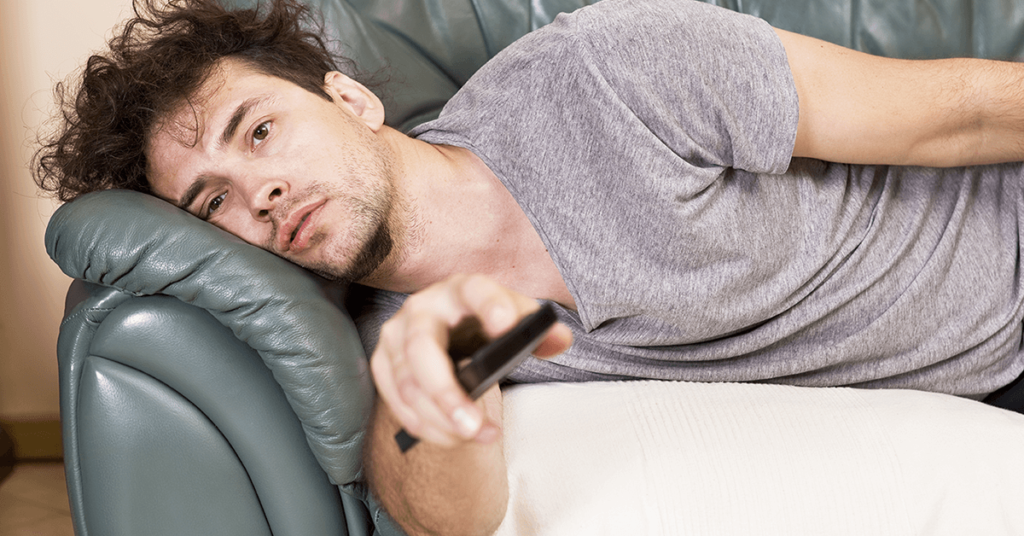
Medically reviewed by
Dacelin St Martin, MD
Triple board-certified in Sleep Medicine,
Internal Medicine, and Pediatrics.
DSWPD | Causes | Clinical Presentation | Risk Factors | Diagnosis | Treatment
Introduction
For some of us, college life gave us the ability to customize our daily schedule. Monday morning classes were avoided like the plague and Friday afternoons had campus looking like a ghost town.
We’d stay up many nights over the years, cramming for exams or writing final papers. Four years later, and a poly-sci degree in hand, we land our first job.
Then the reality sets in, and it hits hard: a 9-5 schedule that requires you to get out of bed by 7 am. You try to go to bed at a decent time only to be met with a harsh dose of insomnia; however, the truth of the matter is that you may have developed a Delayed Sleep-Wake Phase Disorder (DSWPD).
Delayed Sleep-Wake Disorder
DSWPD is a circadian rhythm sleep disorder where a person falls asleep two or more hours later than their desired sleep time. These desired sleep times are often established by societal norms, like a 9 to 5 job.
The later bedtime shifts the wake times to late in the morning or early in the afternoon, leading to a disruption in one’s daily schedule. If the person is required to be at a job at 9 am, they can struggle with daytime fatigue.
Those with DSWPD often attempted to go to bed earlier but face delayed sleep-onset insomnia, meaning they can’t fall asleep at an earlier time even if they try.
Typical hours of sleep duration and wake times for someone with DSWPD ranges between 12 am to 7 am and 11 am to noon. Of all circadian rhythm sleep disorders, adolescents are the most prone to DSWPD.[1] This disorder can also surface in children.
Causes
Changes To Sleep-Wake Timing During Adolescence
When a person develops the condition as an adult, the disorder can be due to sleep-wake timing changes during puberty or adolescence. During puberty, physiological and social changes can lead to delayed sleep-wake cycles, manifesting as a disorder later in life.[2]
1) Long Intrinsic Circadian Periods
Extended circadian periods tie in directly with changes that occur during puberty and adolescence. Studies show that adolescence is associated with a physiological lengthening of intrinsic circadian periods. [3]
Typically, a person’s intrinsic circadian period should not exceed twenty-four hours because an extended circadian duration makes one more likely to develop delayed sleep-wake phase disorder.
2) Sleep Homeostasis
In terms of differences in sleep homeostasis, studies show that slow-wave activity decreases in the first sleep cycle of those with evening chronotypes compared with normal or intermediate chronotypes.[4]
3) Genetic Factor
Genetics may play a role in the development of DSWPD. One study of unrelated families showed a strong heritability of the disorder due to genetic mutation.[4]
4) Changes In Light Exposure
Higher exposure to evening light or lesser exposure to morning light can contribute to the disorder’s phenotype.[1]
A study conducted on a set of middle school students shows that the lack of short-wavelength light in the morning delays the circadian clock in controlled laboratory conditions.[5]
In one study, 2000 lux-hours of nocturnal light exposure were associated with a greater degree of melatonin suppression in adults with DSWPD than the control group, suggestive of excessive circadian sensitivity to light. [3]
Clinical Presentation
In summary, delayed sleep-wake phase disorder can be defined as a person falling asleep hours later than the societal norm. Beyond the mere “night owl” designation, persons who have developed this disorder have little or no control over falling asleep later than their desired bedtime.
Risk Factors
1) Adolescents and young adults are more prone to delayed sleep-wake phase disorder; however, the full demographic breakdown is yet to be determined.
2) Night owls, which is a term that describes people who stay up late of their own volition, are more at risk of developing the disorder.
3) Persons with a family history of DSWPD are genetically predisposed to develop the disorder. Minimal light exposure in the morning is another likely risk factor.
Diagnosis
The timing of a person’s circadian rhythm geared towards a delayed sleep-wake phase disorder can be objectively measured using the following means:
1) Clinical History
Medical practitioners make a set of inquiries into patients’ circadian sleep rhythms over a specific period. DSWPD is suspected when individuals adhere to a pattern of sleep and wake times that are significantly later than conventional or desired times.
2) Sleep Logs and Actigraphy
While sleep logs involve a person manually taking note of sleep times, wake times, and the quality of sleep for at least seven days, actigraphy uses a wristwatch-like device for the same purpose usually for a slightly longer period of time. This device offers a more in-depth assessment of the delayed sleep-wake phase.
Treatment: Medication Vs Other Options
The most successful known medical treatment of DSWPD is bright light therapy.
Bright light therapy aims to course-correct one’s biological clock to ensure that one reverts to sleeping within the ideal hours. By implication, it is best used in the morning. Light boxes are the primary tools of bright light therapy, and they are commercially variable in various wavelengths and frequencies. [1]
Alternatively, delayed sleep-wake phase disorder patients have the option of making behavioral adjustments, which seek to gradually advance bedtimes and rise times to a schedule that aligns with social and occupational constraints.
Some of these adjustments include the minimization of caffeine, nicotine, and alcohol consumption and the avoidance of daytime naps and stimulating activities at least two hours before bedtime.[1]
Conclusion
Due to its close relationship with other circadian rhythm sleep disorders and chronic insomnia, persons exhibiting this condition’s core symptoms must endeavor to get diagnosed and commence treatment following an affirmative diagnosis. Patients are advised to combine bright light therapy with behavioral adjustments towards recovery.
References:
- Carter, Gregory & Auger, R.. (2020). Delayed Sleep-Wake Phase Disorder. 10.1007/978-3-030-43803-6_6.
- Crowley, S.J., Acebo, C., & Carskadon, M.A. (2007). Sleep, circadian rhythms, and delayed phase in adolescence. Sleep medicine, 8(6), 602-612. Retrieved from https://doi.org/10.1016/j.sleep.2006.12.002.
- Hummer, D.L., Jehura, T.J., Mahoney, M.M., & Lee, T.M. (2007). Gonadal hormone effects on entrained and free-running circadian activity rhythms in the developing diurnal rodent Octodon degus. American journal of physiology. Regulatory, integrative and comparative physiology, 292(1), R586-R597. Retrieved from https://doi.org/10.1152/ajpregu.00043.2006
- Nesbitt AD. Delayed sleep-wake phase disorder. J Thorac Dis. 2018 Jan;10(Suppl 1):S103-S111. doi: 10.21037/jtd.2018.01.11. PMID: 29445534; PMCID: PMC5803043. Retrieved from https://pubmed.ncbi.nlm.nih.gov/29445534/
- Figueiro, M.G., & Rea, M.S. (2010). Lack of short-wavelength light during the school day delays dim light melatonin onset (DLMO) in middle school students. Neuro endocrinology letters, 31(1), 92-96. Retrieved from <https://pubmed.ncbi.nlm.nih.gov/20150866/>

